|
Recipe Difficulty: Easy
Keywords: Dairy Free, Naan, Vegan
Naan Bread Recipe Notes
Making your own Naan bread is easy, and the results are satisfying AF. I don't know about you, but when curry is on the menu, having flatbread along side is one of my favourite parts of the meal. I'll either make this naan or my recipe for chapati . Flour I like to use whole wheat flour in my naan bread, but you could use 100% AP flour if you prefer. Yogurt For the yogurt, my go to is Silk brand Almond yogurt. I haven't tried the recipe with other brands of vegan yogurt, but I'd try to find something with a good amount of fat, make sure it is plain, not vanilla, and my personal preference is one that doesn't taste like coconut. (I know curry and coconut work together, but I don't really want my naan to taste like coconut. To be fair I haven't tried it, but I like it this way so that's what I'm going to keep doing.) I think vegan sour cream would most likely work just fine in this context too. Garlic, Vegan Butter & Cilantro I like chopping a couple cloves of garlic and mixing it into my dough, but that is completely optional. Brushing the tops of the cooked naan with butter then a sprinkle of cilantro is also optional, and honestly I add this step for the visual as much as anything. (By the time my curry is piled on top I doubt a small sprinkle of cilantro is going to add much, plus I add cilantro to garnish my curry most of the time too, but it looks nice!) Leftover Naan/Reheating/Freezing I keep my leftover naan bread wrapped up and in the fridge. To reheat I just preheat my cast iron pan and warm each side. You can freeze naan for up to 3 months. I pop cooled naan into a freezer bag. Then when I want one, I thaw and reheat the same way. Cooking Naan I use a cast iron skillet on my stove top. You could also preheat a cast iron skillet or pizza stone in a hot oven and cook it that way.
About Naan
The word "naan" is derived from the Persian word "nan," which means bread. This reflects the historical influence of Persian cuisine on the Indian subcontinent, as there has been cultural and culinary exchange between the two regions over the centuries. Traditional naan is typically made from a simple dough of wheat flour, water, and yogurt, which is then leavened with yeast or a natural starter culture and baked in a tandoor oven, which is a clay oven with high temperatures. This method gives naan its distinctive soft, chewy texture and slightly charred exterior. For home cooks, using preheated cast iron pan is a great alternative.
Step 1, get your ingredients organized. In the largest bowl, flour with salt on top. Yeast is mixed with warm water and a bit of sugar. Choose a high fat vegan yogurt. I use Silk Almond Yogurt. Chopped garlic is optional.
Step 2. Add everything to the bowl with your flour. I always avoid pouring my yeast & water mixture onto the salt that I add to the top of the flour mound.
Step 3. Using a spoon to stir, start to combine everything to form your dough. You might have to add a few splashes of warm water to get all of the flour incorporated. I always prefer to start with less water, then just add a tiny amount at a time if needed.
Step 4. I switch from spoon to using my hands to finish gathering everything together to form a ball of dough. I transfer it to my counter and knead if for a few minutes. This is the point where you might need some practice if you aren't used to kneading a simple bread dough. You can totally add flour/splashes of water if needed. If it is too dry, it won't fold over itself as you knead it. If it's too wet it's really difficult to knead without sticking all over your hands. Ideally the dough is a bit tacky, but not sticky or dry.
Step 5: After kneading the dough, shape into a ball, place back into the (clean) bowl and cover with a damp tea towel to rise. About one hour, or until doubled.
Step 6: Once doubled, punch down the dough. It might take more than one hour to rise depending on the temperature of your room/space. Keeping it somewhere warm helps.
Step 7: After you punch down dough, divide it into 8 pieces. form them into little circular shapes as best you can.
Step 8: Now roll each dough ball into an approximate 6 inch circle. If it is hard to roll, you can let the dough rest just for a few minutes. The dough will relax and it is easier to roll out. Dust with flour as necessary during this phase. I find it easiest to flatten it out with my hands into a disc shape first. Then when you are rolling, keep turning the naan like hands moving on a clock. Roll, turn, roll, turn etc....this will help you get an even circle shape. (mine are never perfect, and they don't need to be!)
Step 9. Heat a cast iron pan over medium heat (or just a bit higher than that). Place a piece of naan in the preheated pan. It might start to bubble as it cooks. 2-3 minutes should do it. Then flip and continue cooking the other side. Watch out for steam escaping from the bubbles. Steam burns are the worst!!!
Step 10. Finish cooking on the second side for 2-3 more minutes. Repeat with your remaining naan. I move the cooked ones over to a sheet pan.
Step 11. Brush naan with melted butter and a sprinkle of chopped cilantro. (optional)
Hey friends, this post may contain affiliate links. If you make a purchase through one of these links, I may earn a small commission at no extra cost to you.
0 Comments
Leave a Reply. |
Author I'm Trisha Archives
May 2024
|
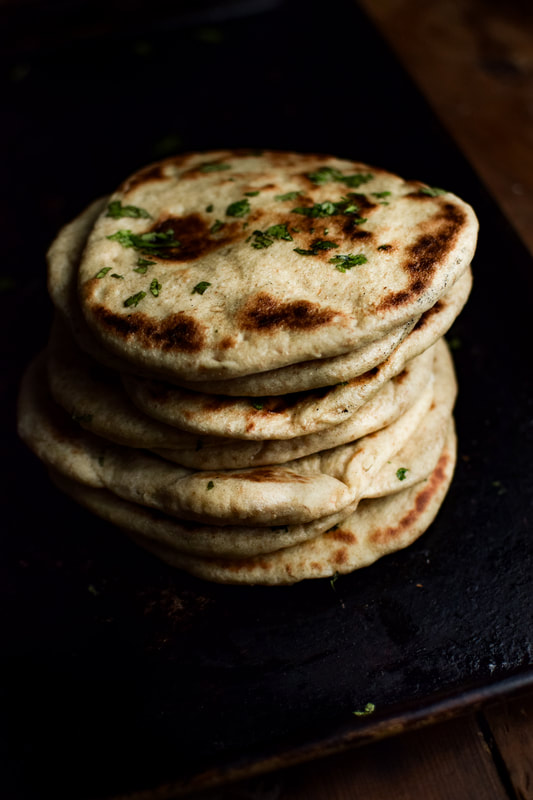



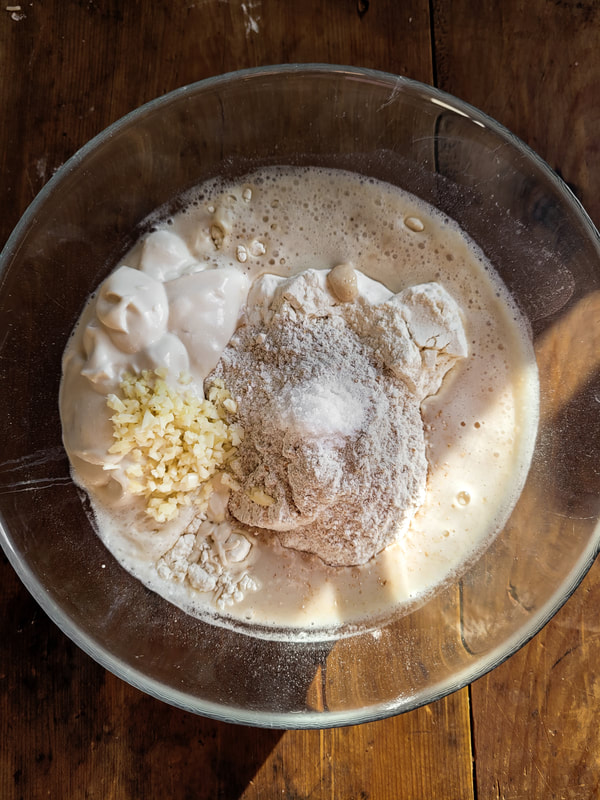
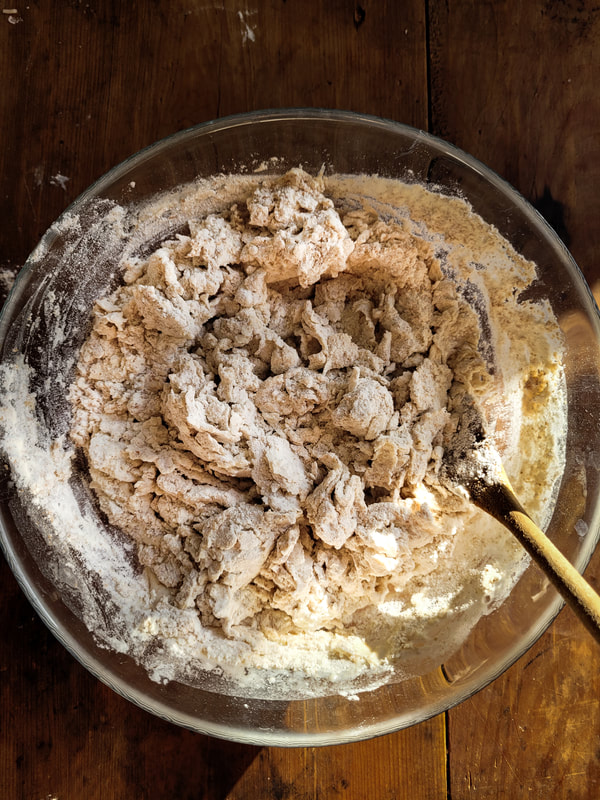
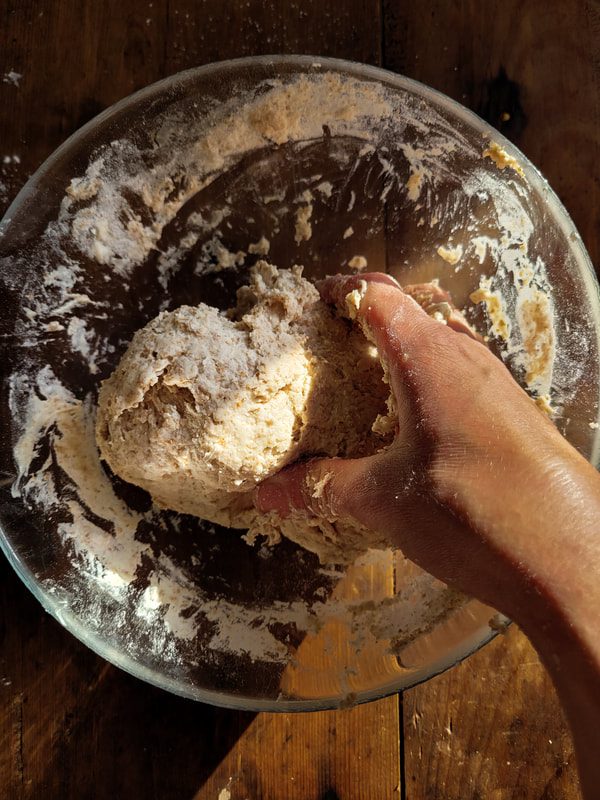


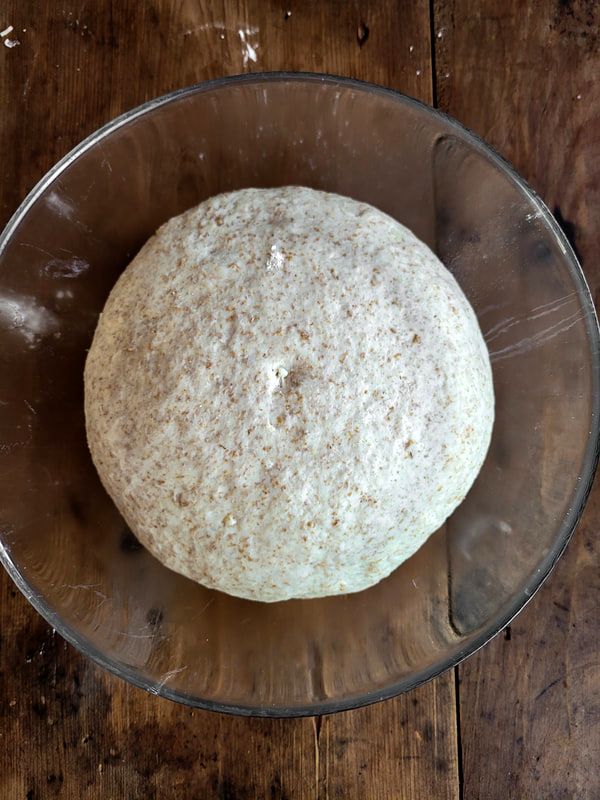

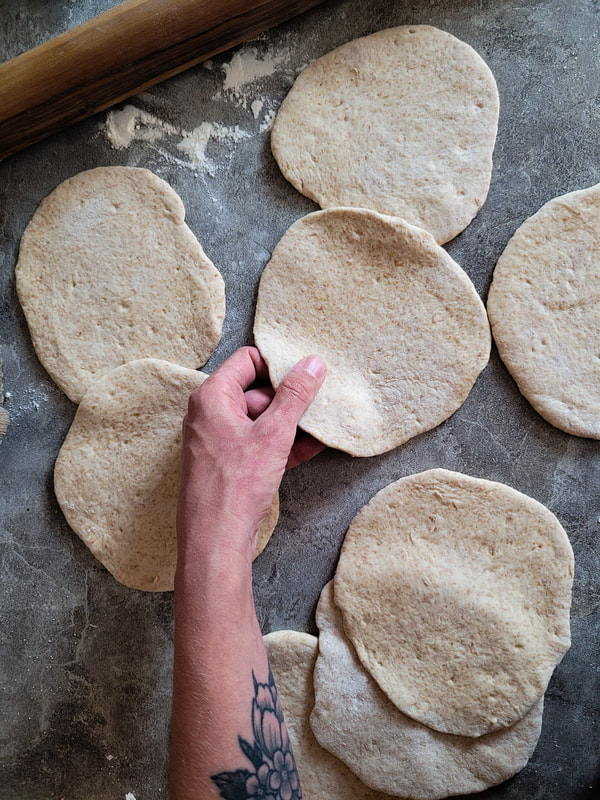

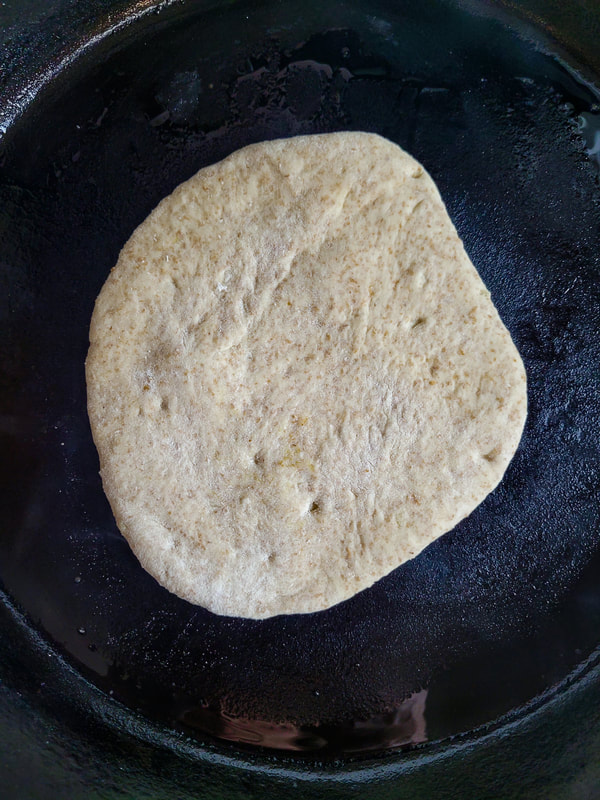

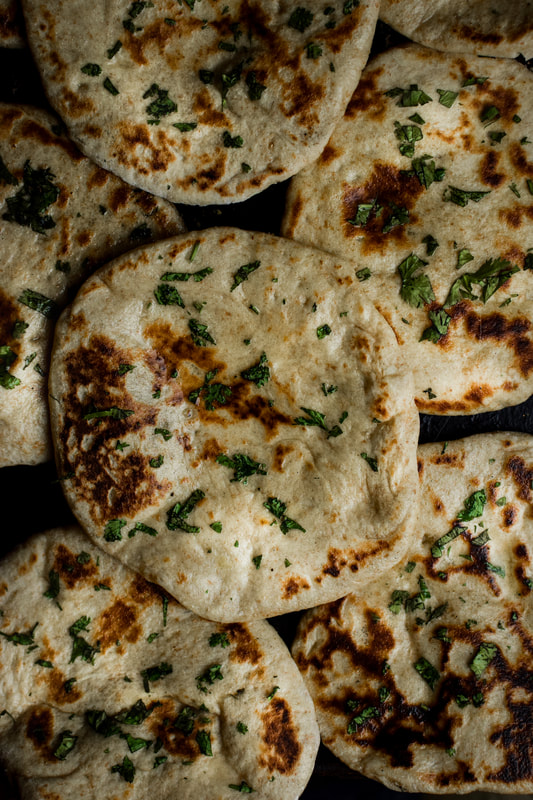
 RSS Feed
RSS Feed
